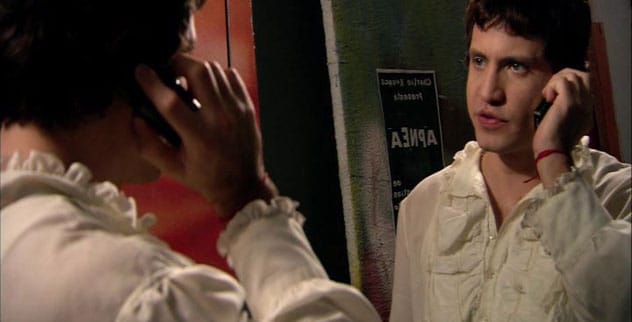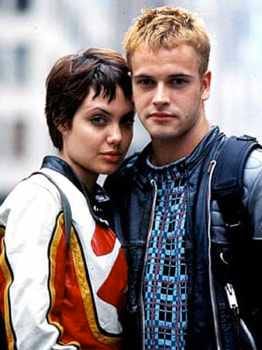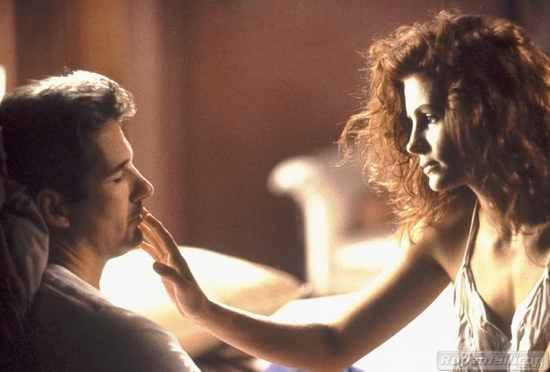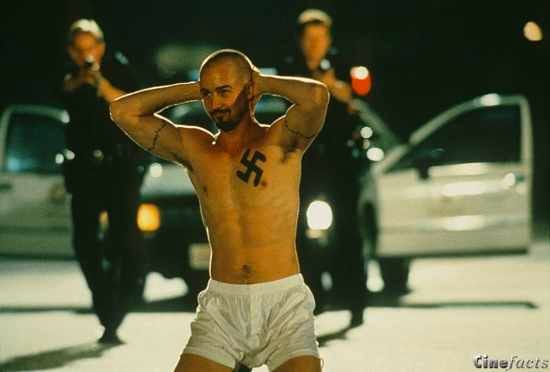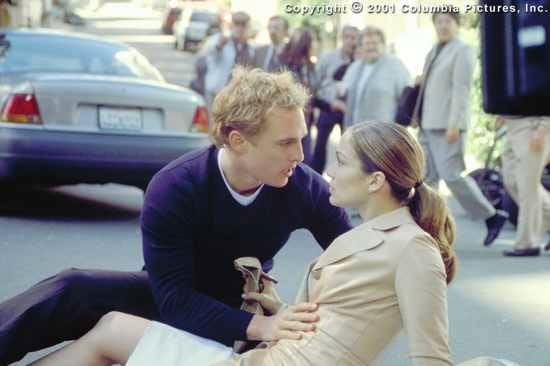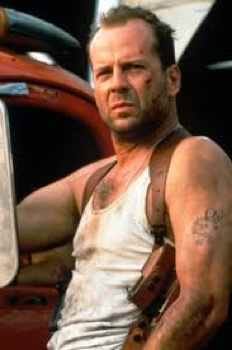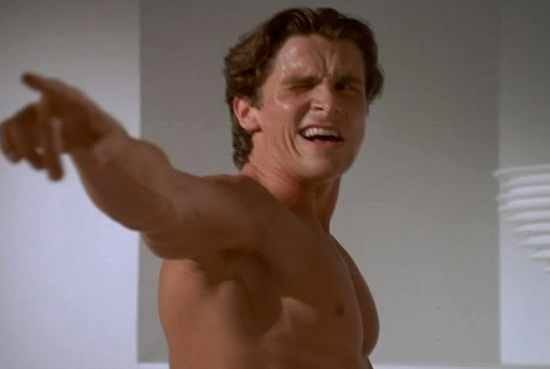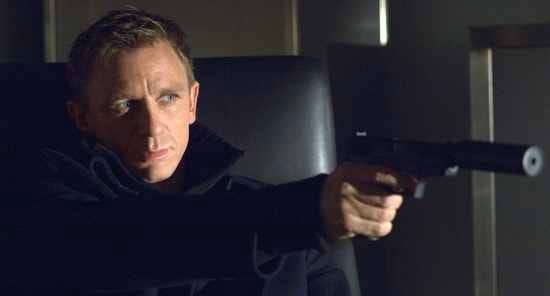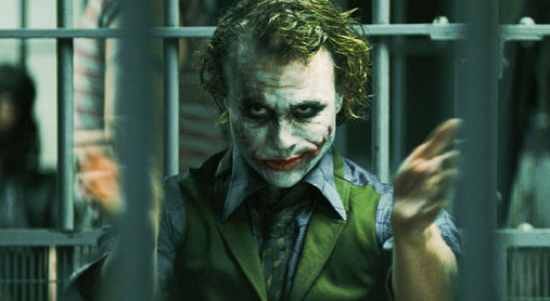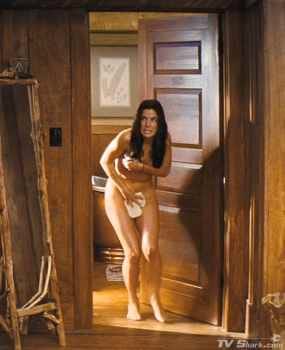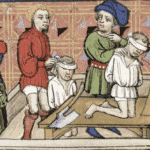We all adore movies, don’t we? The magic of storytelling, the stunning visuals, and the unforgettable characters can transport us to different worlds. But sometimes, amidst the cinematic brilliance, certain patterns emerge. These are the movie clichés – those well-worn plot devices, character types, or scenes that we’ve seen so many times, we can often predict them beat for beat. While they might make us roll our eyes or chuckle at their predictability, they’re a curious part of moviemaking. Ready to explore some of the most common offenders? Let’s dive into ten movie clichés that are instantly recognizable, for better or worse!
10. The Gasp-Inducing Nightmare Wake-Up

It’s a scene you’ve probably witnessed countless times. Our hero or heroine is caught in a terrifying dream sequence. Maybe they’re being chased, or watching a loved one in peril, or facing their deepest fear. Just as the worst is about to happen, they bolt upright in bed, gasping for air, eyes wide with terror. Sweat might be glistening on their forehead. Often, the camera is uncomfortably close to their face to maximize the dramatic effect.
This cliché is a staple in horror films and psychological thrillers, serving as an easy jump scare or a way to externalize a character’s inner turmoil. While it can be effective once in a while, its overuse has made it a bit of an eye-roller for many viewers. You’ll spot this in movies like Bram Stoker’s Dracula, Hackers, and even surprisingly in Moulin Rouge.
9. The Sympathy-Seeking Childhood Monologue

Ever watched a character suddenly launch into a heartfelt, often teary-eyed, story about their tough childhood? This is the “When I was a little girl/boy…” speech. It’s a screenwriter’s shortcut to making us feel empathy or sympathy for a character, especially if they have some unlikeable traits. By revealing a past hardship or a tender memory, the movie hopes we’ll soften our view of them.
While a well-placed backstory can add depth, this particular cliché often feels like emotional manipulation. It’s as if the film is saying, “See? They’re not so bad! They had a sad past!” Romantic comedies and dramas are frequent users of this trope. Think of moments in films like Pretty Woman or While You Were Sleeping where such speeches aim to tug at your heartstrings.
8. Staring Blankly at the Phone After Bad News

A character receives devastating news over the phone. The color drains from their face. Their hand might tremble. And then… they just continue to stare at the phone receiver. Sometimes for an uncomfortably long time. What are they expecting? That the phone will offer a solution, or perhaps retract the terrible information it just delivered?
It’s a visual way to show shock and disbelief, but it’s become such a common reaction in films that it’s lost some of its impact. Maybe they’re hoping a tiny fairy will fly out of the earpiece and say, “April Fools!” Now that would be a cinematic twist! You’ll see this pensive phone-gazing in movies like Ed Wood, Gozu, and, very fittingly, Phone Booth.
7. The Off-Screen Assault (Witnessed by a Grinning Goon)

Sometimes a movie plot requires a character to be attacked or brutalized, but showing the actual violence would earn it a higher age rating than desired (hello, PG-13 concerns!). The solution? Cut away from the victim during the assault. Instead, the camera focuses on an accomplice of the attacker, often a secondary villain or henchman.
This character is usually seen smirking, looking excited with bloodlust, or even taking a swig from a bottle, thoroughly enjoying the unseen mayhem. It’s a way to imply the horror without explicitly showing it. A variation involves a mentor figure observing their protégé’s first act of serious violence, nodding with dark approval, as seen in Interview with a Vampire or American History X. Even Twilight: Eclipse uses this cut-away technique.
6. The Lead Character’s “Homely” Best Friend

In the world of romantic comedies, it seems almost a rule: the stunningly beautiful main character must have a best friend who is… well, let’s say, more “average” or “quirky” in appearance. Heaven forbid the lead is upstaged by someone equally gorgeous! This friend often serves as the sounding board, the comic relief, or the one offering slightly cynical advice.
While male leads also get sidekicks, their friends are often portrayed as funny or goofy. Female leads’ friends, however, tend to be labeled “kooky” or simply less glamorous. It’s a trope that subtly reinforces certain beauty standards, ensuring the star shines brightest. You’ve seen this play out in films like How to Lose a Guy in 10 Days, The Wedding Planner, and Hitch (where the friend roles are quite pronounced).
5. The Perfectly Timed Pre-Danger Catchphrase

Our hero is cornered. The villain is monologuing. Or perhaps a giant explosion is imminent. What’s the most important thing to do? Deliver a witty, cool, or defiant catchphrase, of course! Those few extra seconds spent crafting the perfect one-liner before diving into action (or out of harm’s way) are apparently crucial.
“Yippee-ki-yay, motherf*cker!” is the gold standard, naturally. This cliché highlights the hero’s unflappable coolness under pressure. It’s all about that memorable line that will be quoted by fans for years to come. It’s often a bit cheesy, but let’s be honest, sometimes it’s pretty satisfying. See this in full glory in Die Hard (obviously), Hot Fuzz, and Bad Boys.
4. Staring Intensely into the Mirror (for an Existential Crisis)

A character is having a moment. A crisis of identity, a moral dilemma, or just a really bad day. Where do they go to process these intense feelings? To the nearest mirror, of course! They stare deeply into their own reflection, as if expecting answers to appear on the glass. Will they see their true self? A hidden monster? Or just… a smudge?
This trope is a visual shorthand for introspection. While it can be used effectively to show a character’s internal struggle (like in Memento, where it’s quite justified), it often feels like a placeholder for more nuanced emotional expression. You’ll see characters gazing at their reflections in films such as American Psycho and V for Vendetta.
3. The Villain Who Explains Their Entire Evil Plan

The hero is finally captured! They’re tied up, disarmed, and completely at the villain’s mercy. This is it. The end. Or is it? Instead of finishing the job quickly and efficiently, the villain often can’t resist a good old monologue. They delight in explaining every intricate detail of their dastardly plan, how they’ll succeed, and why the hero has failed.
This classic blunder does two things: it provides crucial exposition for the audience (a case of “telling” not “showing”), and more importantly, it buys precious time for the hero to escape or for help to arrive. If villains just got on with it, many movies would be a lot shorter! This is practically a requirement in almost every James Bond film, and countless other action and adventure stories.
2. The Oh-So-Witty Sarcastic Clap

The hero has just performed a minor act of defiance or a small heroic feat, usually in full view of the main antagonist. The villain’s response? A slow, deliberate, and utterly sarcastic clap. Sometimes it’s accompanied by a smug grin or a condescending remark like, “Oh, bravo. Very impressive.”
This gesture is designed to belittle the hero’s efforts and showcase the villain’s arrogance and control. It’s meant to make both the hero and the audience want to wipe that smirk off the villain’s face. While undeniably clichéd, it’s often effective in ramping up the animosity. Memorable sarcastic claps can be found in The Dark Knight, The Breakfast Club, and Primal Fear.
1. The Adorably Clumsy (Yet Stunning) Heroine

She’s gorgeous, smart, and successful. But wait, there’s more! To make her relatable and not *too* perfect, she’s also endearingly clumsy. She trips over air, spills coffee down her pristine white shirt, or has comically disastrous encounters. This “kookiness” is supposed to make her seem humble, vulnerable, and approachable, despite her obvious charms.
This trope is particularly prevalent in romantic comedies. The clumsiness often leads to cute meet-cutes or humorous situations that allow her love interest to see her “real” quirky self. While meant to be charming, it can sometimes feel a bit patronizing or one-dimensional. You’ll recognize this character type in many films starring Meg Ryan, Sandra Bullock, or Kate Hudson, such as French Kiss, While You Were Sleeping, and The Proposal. Yawn, indeed.
So there you have it – ten more movie clichés that are hard to miss once you start looking for them. They might be predictable, sometimes even a little lazy, but they’ve become part of the cinematic language we all understand. Perhaps their familiarity is part of their strange charm, or maybe they’re just waiting for a new generation of filmmakers to cleverly subvert them!
Which movie clichés always make you groan or laugh? Are there any you secretly enjoy? Leave your comment below and share your thoughts!


